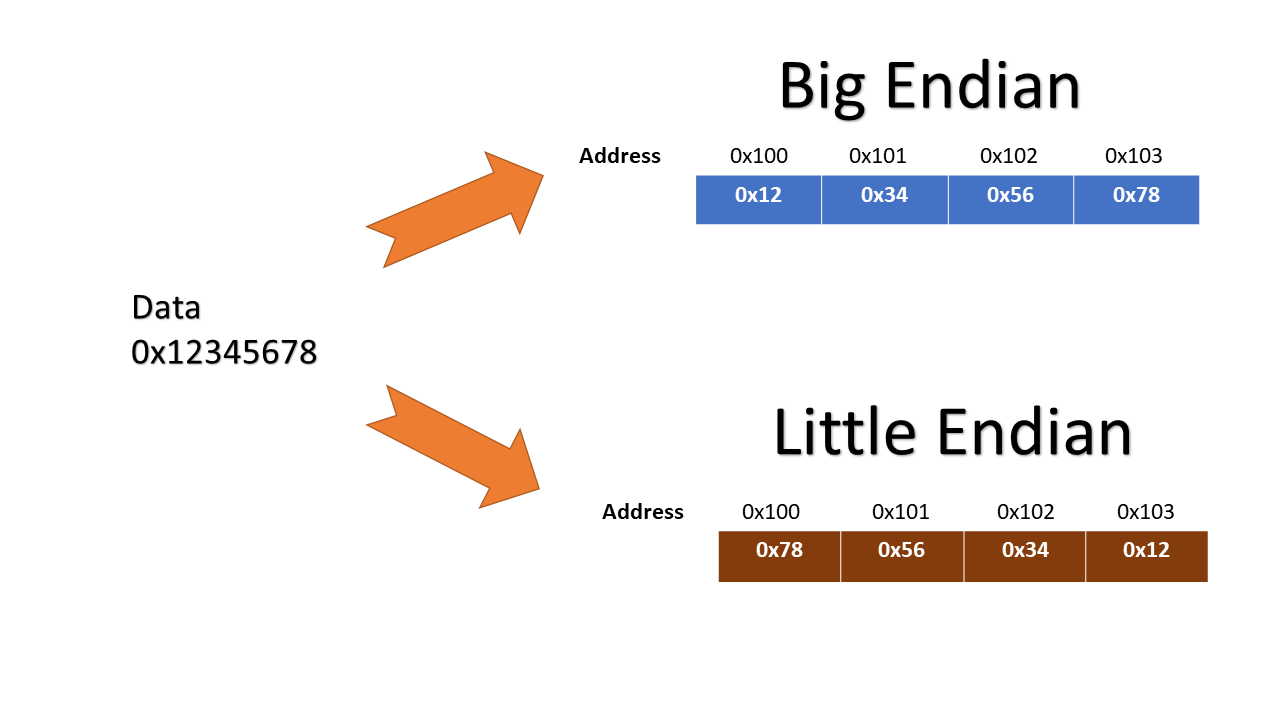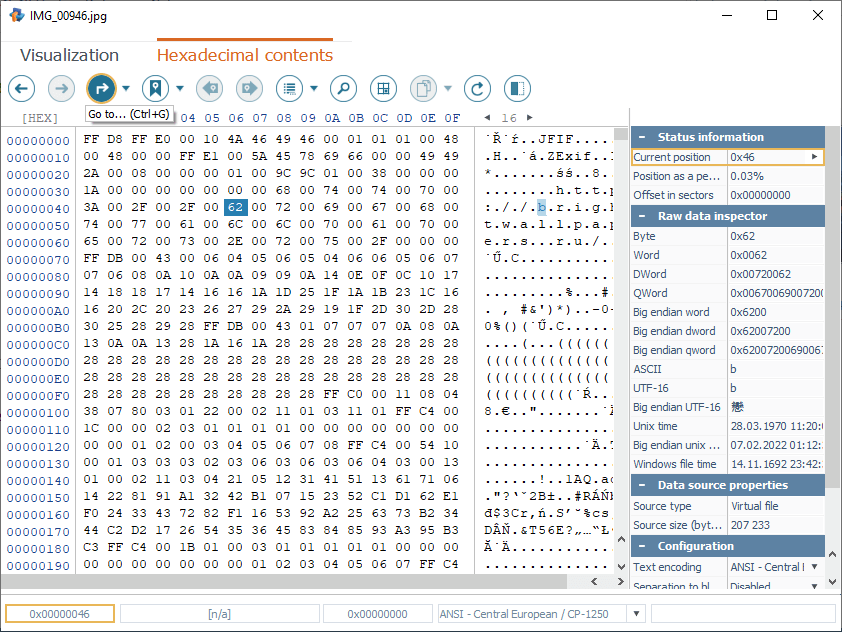
convert hex big endian to little endian
Flipping Bytes: Converting Big-Endian Hex to Little-Endian

Source: yoginsavani.com
Ever felt like your computer's storing information upside-down? Maybe your data's showing a different picture from what it's really telling? That's where endianness comes in! Big-endian and little-endian are just different ways of storing binary data (bits and bytes). This article will explain converting big-endian hexadecimal data into the little-endian format in an easy-to-understand way.
What is Endianness?

Source: digital-detective.net
Endianness is like how you write a number. Imagine the number 1234.
- Big-endian: Writes it like 1234 (left to right)
- Little-endian: Writes it like 4321 (right to left).
In the computer world, this means how bytes are arranged in memory.
Big-Endian Example
Think of it as arranging books on a shelf.
- The largest numbers, or most significant parts are written first on the left-side shelf
- and smalles ones next to them on the right
So, 0x1234 (big-endian) might look like:
Byte 1 (most significant): 0x12
Byte 2: 0x34
Little-Endian Example
It's like putting boxes in a crate, putting the smaller ones first, so
Byte 1 (least significant): 0x34
Byte 2 (most significant): 0x12

Source: raisedr.com
Why Convert Between Endian Formats?
Data, like numbers and characters (our computers have to deal with) ,are often stored and sent differently, causing problems sometimes.
- Different systems: Different computers, programs use different "orders", this matters a lot especially when dealing with network traffic (e.g., messages between computers), where things need to have the right format.
- Network communication (or protocols for sending things over networks).
- Making sure your data displays correctly (data visualizations). Sometimes it makes sure things don't display "backwards"
Hexadecimal (Hex) Representation
- Hexadecimal is a base-16 numbering system (uses 0-9 and A-F). It's a shortcut to write binary data.

Source: els-cdn.com
For example, "0x12" (written as hex) stands for 18 in decimal.
Steps to Convert Big-Endian Hex to Little-Endian
- Identify the Input: Figure out the input is big-endian, "starting from the left" to remember how your original data works. (Check the format; the computer system often defaults to the "order"). Understanding that initial format, which can depend on your systems, or how things got transported is really important to properly handling data
- Break it Down: Split the hexadecimal number into bytes. 0x1234 needs splitting: "Byte1 = 12, Byte 2 = 34" These are like separate components within a system of info, like boxes in a carton. This makes working on it smaller.
- Reverse the Order: Swap those bytes. "Swap 12 and 34", this is reversing like changing the rightmost stuff first to leftmost for little-endian (a big swap!).
- Check the little endian Format (the new arrangement).
Example
Original (big-endian): 0x1234
- Split: Byte 1 = 0x12, Byte 2 = 0x34
- Reverse: Now the little-endian would be Byte 1 = 0x34, Byte 2 = 0x12
- Result: 0x3412

Source: sstatic.net
Conversion Techniques (Code Example-Python)
Python's built-in functionality handles things efficiently:
def convert_hex_endian(hex_string, input_endianness): # Functions help us group pieces of a code together, often repeated stuff.
#Input must be the type we are expecting. Also, checks for issues to stop bad info
if input_endianness != "big" and input_endianness != "little": # Check if valid
raise ValueError("Invalid endianness. Please specify either 'big' or 'little'.")
try:
int_value = int(hex_string, 16) #convert the string to decimal (0 to 2^x where x >0) so to convert it easily
except ValueError:
raise ValueError("Invalid hex string format!")
if input_endianness == "big":
# We only want to reverse the bytes if the data type we received is Big-endian and not the one we already got (e.g. we're just trying to confirm if we can handle little-endian)
little_endian_representation = hex(int.from_bytes(int_value.to_bytes(2, byteorder="big"), byteorder='little'))[2:].upper()
return little_endian_representation
else:
return hex(int_value).replace("0x","")
This converts the data from a big-endian way and places it in a "Little-endian order".
Important Considerations:
- Data Type: Understand the data type.
It should affect how things like integers and stuff work on the machine; and they don't all behave like little-endian or big-endian alike on many devices. - Byte Order: "little-endian," "big-endian".
print(convert_hex_endian("0x1234", "big"))
Problems and Solutions (What to Look For When Dealing with Endianness Issues)
Data format, how info is stored, especially while transfering through different machines or networks, need to match,
-
Mismatched byte orders Problems often happen if you do a task that takes data, sending it from A to B, but then machine B works differenty (order is off). This messes up the stuff you send, like if B thinks 12 is first instead of last!
- Solutions: Double-check and specify correct data format ("big-endian", "little-endian").
Additional Tips
(Try these yourself to really get how to deal with the stuff!)
-
Practice using different hexadecimal values (example: 0xABCD, 0xF001). Try it! It'll really reinforce it and make it stick, plus if it helps you solve real problems then this is better
-
Convert some small to large (multi-bytes!) data (0x12345678 for example). Do some practice questions, you should easily recognize some similar examples. (that involves many parts, many elements (so it really helps in complex cases).
These guidelines can get your projects work like the dream when you encounter similar problem scenarios like big-endian to little-endian (or the other way!) and even other data-handling scenarios as well!. You can really be like, "Gotcha!". Now that you've learned to do this!


